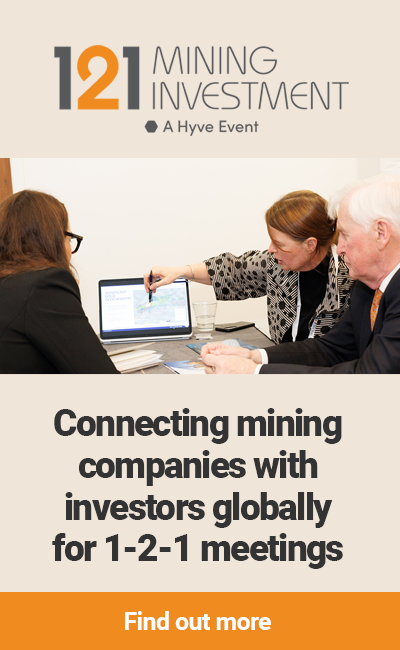John Reade joined the World Gold Council in February 2017 as Chief Market Strategist, and is responsible for producing strategy and developing insights on the gold market; leading our global dialogue and leading our research team.
John has over 30 years’ experience in the gold industry, most recently as a partner and gold strategist with Paulson & Co for 7 years. Prior to that, John worked as a precious metals strategist at UBS; a gold equity analyst in South Africa; and held various positions in production and project evaluation in the gold division of Gencor.
1. John, thank you for joining The Assay. What have been some of the major issues that have dominated your agenda during the last year?
Increasing geopolitical uncertainty and slowing economic growth are two of the main issues that dominated our agenda over the past year or so. Lower interest rates – due to the highest level of central banks cutting rates since the global financial crisis – also led record inflows into gold-backed exchanged-traded funds (ETFs) and central bank holdings, as investors seek safe-haven assets.
Increased gold price volatility over the past year, however, and has resulted in consumers questioning their spending power and holding back from purchasing, seen in the weaker consumer demand for gold in Q3.
We also saw the end of the fourth, and final, Central Bank Gold Agreement (CBGA) in July 2019. This announcement was a major endorsement of gold’s role in global monetary reserves and is yet another sign that central banks attitudes towards gold since the financial crisis have changed.
The mining industry, meanwhile, is being shaped by a number of factors, many of them reflective of broader social and environmental trends. Investors are now placing far greater importance on integrating ESG considerations into their portfolios, meaning gold miners increasingly need to be able to clearly demonstrate responsible practices and their ability to deliver social value in addition to delivering solid returns to investors.
2. What are the gold trends you expect to see for 2020? And the broader long-term picture for gold?
The initial months of 2020 are likely to be a continuation of the trends over the last quarter of 2019. We believe investors will continue to face an increasing set of geopolitical concerns, which combined with low interest rates will likely continue to support gold investment demand.
Investment demand is also expected to be supported by continuing demand for gold by central banks and gold-backed exchanged-traded funds (ETFs). We expect net gold purchases by central banks to remain robust in 2020, even if they are lower than the record highs seen in recent quarters.
We may also see stronger private investor demand for gold bars and coins. This has been particularly weak in recent quarters, dampened by uncertainty over local price trends. However, the heightened risk awareness that has caused institutional investors to return to gold may filter through to individuals and private wealth managers.
We expect consumer demand for gold to continue to soften in the near term, due to uncertainty in geopolitics and expectations of weaker economic growth. This will be alleviated by structural economic reforms in India and China in the long term.
Looking at the broader long-term picture, gold has historically performed well in the year following Fed policy shifts from tightening to ‘on-hold’ or ‘easing.’ As such, we believe now is a good time to consider the role of gold in a portfolio, and potential long-term performance returns.
3. Delving down in to the regional gold markets, can you give insight into:
A. Europe
Europe continues to be a major source of demand for gold and London continues to be the centre of the over-the-counter global gold market, and home to one of the largest stockpiles of gold in the world.
European geopolitical uncertainty in the form of Brexit and the European Central Bank announcing that it would resume quantitative easing – has continued positive sentiment towards gold in the region this year as investors sought safe-haven assets.
Inflows into European gold-backed ETFs have become increasingly diverse over the course of the year, with UK and German listed ETFs leading the way in Q3. This brought overall holdings to a record high of more than 1,290t.
Russia and Turkey continue to dominate in terms of central bank net purchases, with Turkey buying its largest ever monthly purchase of 41.8t in August. The past year has also seen other central banks, such as Ukraine and Poland, accumulate gold.
Jewellery demand fell fractionally in Q3, down one per cent to 12.4t, as modest year-on-year increases in France and Spain failed to offset overall decline in the region.
B. China
While China continues to be the world’s largest gold market, high local gold prices and concerns over the economy have impacted recent gold demand.
In Q3, jewellery demand in China declined 12 per cent year-on-year to 156.3t, the fourth consecutive quarter of year-on-year declines, as concerns over the health of the Chinese economy and rising inflation led consumers to prioritise spending elsewhere. China’s bar and coin demand also fell 51 per cent to 42.8t, its lowest level in three years, on the back of multi-year highs in the local gold price.
Despite this, Chinese gold reserves have continued to increase, with the People’s Bank of China reporting higher gold reserves every month since it resumed buying in December 2018. There has also been positive sentiment among younger consumers, with most retailers seeing growth in the sales of 3D hard gold, 5G gold and other innovative jewellery products.
We believe that, if addressed, structural reforms in the Chinese gold market will have positive long-term implications and ensure China stays at the forefront of the global gold industry.
C. Middle East
Gold has been an integral part of Islamic culture for centuries, prized for its value as a currency and recognised as a store of wealth. Until recently, however, Islamic savers were unclear whether they could invest in gold products. In 2016, the AAOIFI Shari’ah Standard on Gold, developed in collaboration with the World Gold Council, provided the clarity that investors needed. Our in-depth research into investor attitudes towards gold revealed that more than three-quarters of the Islamic investors surveyed would consider increasing their exposure to Islamic investments in the near future, boding well for the precious metal.
The UAE remains a major trading hub for gold jewellery, and the new policy initiatives announced in October – which will include a centralised platform for trading and tracking gold trade in line with international standards – could boost its role further.
D. North America
North America is home to the largest and most liquid gold-backed ETFs and led global inflows in 2019, accounting for over 70 per cent of the global total in Q3. Inflows were supported by more accommodative monetary policy, with the Fed opting to cut rates twice in Q3, as well as signalling the potential for an additional cut this year.
US jewellery demand for gold remains positive, experiencing its eleventh consecutive quarter of growth in Q3, with consumer confidence in the economy remaining upbeat throughout the period.
E. India
India is one of the largest markets for gold and the market is continuing to evolve and grow to meet consumer demand. It has recently been subject to significant policy changes which include trying to move India’s informal cash economy towards greater transparency and into the digital age. These have included; the introduction of the pan- India Goods and Services Tax (GST), which is helping to enable greater transparency in the industry; the launch of the Gold Monetisation Scheme, and introduction of mandatory hallmarking for gold jewellery last month.
Concerns around the slowing economy, record high local gold prices and the import duty hike on gold from 10 per cent to 12.5 per cent in July, however, have impacted investment demand for gold in the region. In Q3, Indian bar and coin demand slumped to its lowest level since Q1 2009, while Indian jewellery demand of 101.6t was almost a third lower year-on-year, despite some support from wedding-related purchases.
4. The US and China have signed a Phase One trade deal, but with lingering suspicions of one another. What will be the impact on gold and currencies?
Geopolitical tension and uncertainty often cause fluctuations in gold and currencies, the majority of which are felt in the short-term. While we do not make predictions on the gold price, we can speak to the impact of geopolitical tensions on gold more generally.
Gold acts as a diversifier and a vehicle to mitigate losses in times of market stress, hence heightened global trade tensions as a result of the US-China trade war gives increased incentive for investors to turn to gold as a safe-haven asset. Last year, we saw the gold price reach a six-year high as ongoing geopolitical tensions were coupled with concerns of a slowdown in economic growth, lower interest rates and the level of negative yielding debt.
5. Going into 2020, what is the message that World Gold Council conveys to central banks and sovereign wealth funds?
The World Gold Council doesn’t give investment advice, but lately we have seen a significant acceleration in central bank buying, with more and more central banks increasing their allocations to gold. This reflects a combination of factors, including the desire to hedge against increased geopolitical and economic uncertainty. Gold’s characteristics, including its lack of credit and political risk, mean that it can play a unique stabilising role in such circumstances. More generally, it is a highly effective diversifier against the assets typically held by both central banks and sovereign wealth funds.
6. It has been written before that the World Gold Council recommends 2 to 10 percent allocation of gold in investment portfolios. Why this amount and not more/less?
This amount has been calculated from extensive portfolio allocation analysis, which indicates that investors who hold between two to ten per cent of their portfolio in gold can significantly improve performance. Over the past decade, UK investors with an asset equivalent to an average private investor portfolio would have benefited from including gold in their portfolio. This is also true even when assuming a conservative average annual gold return of a modest two per cent to four per cent – well below its actual, long-term historical performance.
Broadly speaking, the higher the risk in the portfolio – whether in terms of volatility, illiquidity or concentration of assets – the larger the required allocation to gold, within the range in consideration, to offset that risk.
7. Is improved access to banking and smartphone enabled digital financial services seen as a threat to gold’s traditional role as a major store of wealth across Asia?
Over the past three years, a host of digital gold investment platforms have sprung up in the Asian market. Particularly in India, providers like PayTM Gold, PhonePe, Mobikwik and Safegold are the latest to join this trend. We see this as a positive development that should spark further interest in the gold market, rather than a threat to gold’s traditional role as a major store of wealth.
The rise in digital gold providers in the region is proliferating, and this will give the region increased accessibility to invest in gold.
8. Can you update us on the ESG requirement that the World Gold Council has been developing called the Responsible Gold Mining Principles? How has these principles been created and what is the status for the adoption of these principles?
Before we launched the Responsible Gold Mining Principles (RGMPs), there was no over-arching framework that set out clear expectations for investors and downstream users as to what constitutes responsible gold mining. Working with our Members, we have set out the Principles that we believe address the key ESG issues for the gold mining sector.
Our aim is that the RGMPs becomes a credible and widely-recognised framework, through which gold mining companies can provide confidence to investors, supply chain participants and consumers that their gold has been produced responsibly.
We conducted a widespread consultation during the process of creating the principles, with over 200 organisations and individuals from across government, international organisations, investors, civil society, supply chain participants and gold mining companies participating in this process.
We expect all Member companies of the World Gold Council to implement this initiative, but appreciate that the RGMPs are demanding, incorporating a broad set of commitments related to ESG performance. As such, it will likely take time for some companies to fully implement. That is one of the reasons why we have set out a three-year timescale to full conformance.











